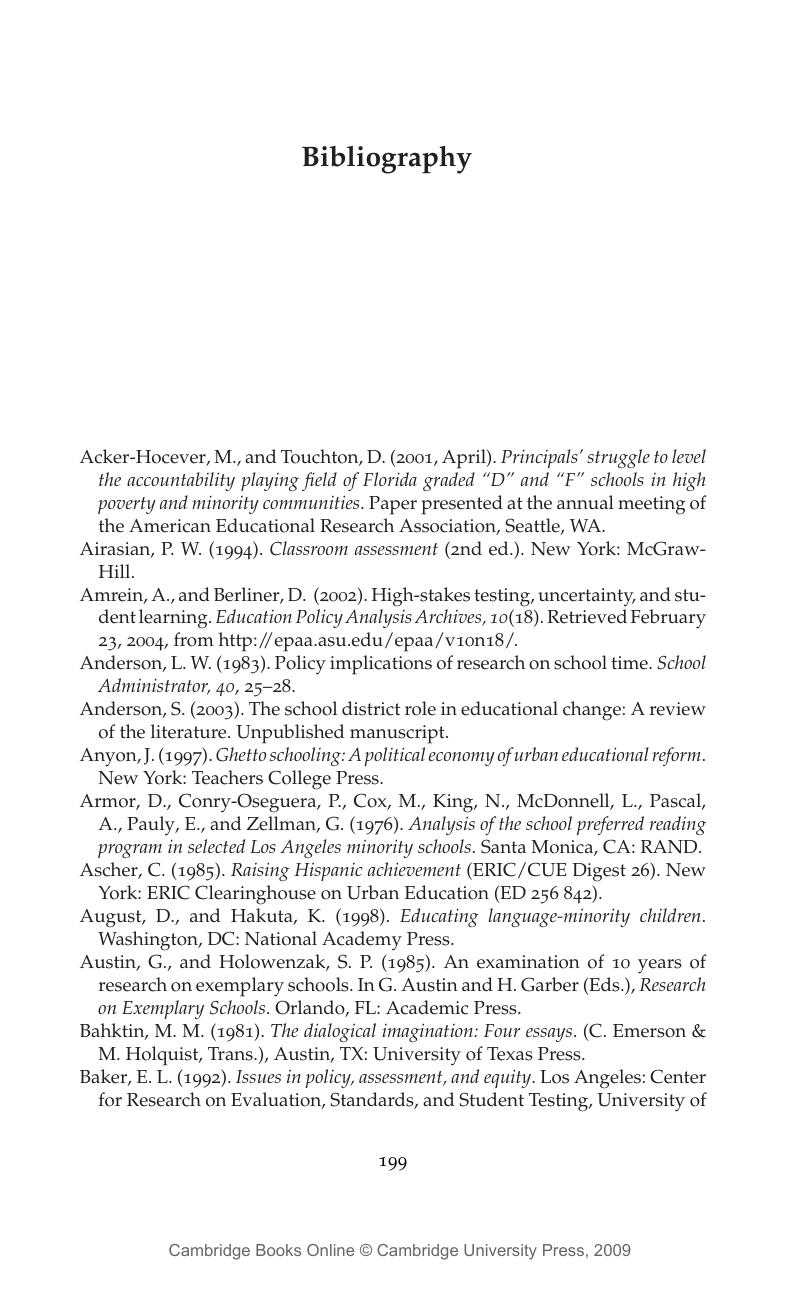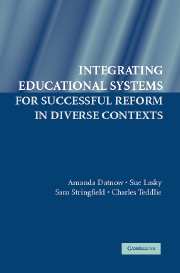Book contents
- Frontmatter
- Contents
- List of Figures and Tables
- Acknowledgments
- 1 Introduction
- 2 School Effectiveness and Improvement
- 3 District-Level Reform Efforts
- 4 Community-Level Reform Efforts
- 5 State-Level Reform Efforts
- 6 The Role of Reform Design Teams
- 7 The Role of the Federal Government in Reform Efforts
- 8 Methodological Issues in the Study of Systemic Integration for Effective Reform
- 9 Discussion and Conclusion
- Bibliography
- Index
- References
Bibliography
Published online by Cambridge University Press: 02 September 2009
- Frontmatter
- Contents
- List of Figures and Tables
- Acknowledgments
- 1 Introduction
- 2 School Effectiveness and Improvement
- 3 District-Level Reform Efforts
- 4 Community-Level Reform Efforts
- 5 State-Level Reform Efforts
- 6 The Role of Reform Design Teams
- 7 The Role of the Federal Government in Reform Efforts
- 8 Methodological Issues in the Study of Systemic Integration for Effective Reform
- 9 Discussion and Conclusion
- Bibliography
- Index
- References
Summary

- Type
- Chapter
- Information
- Publisher: Cambridge University PressPrint publication year: 2006



